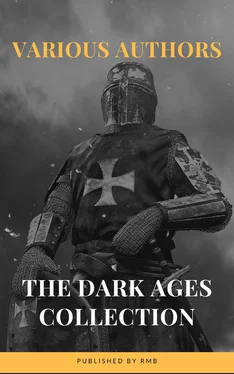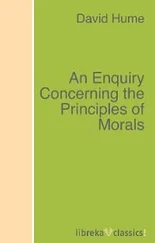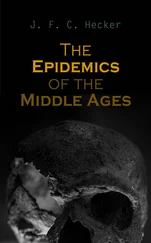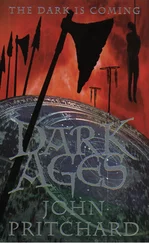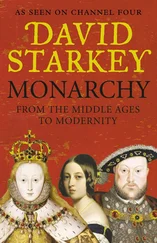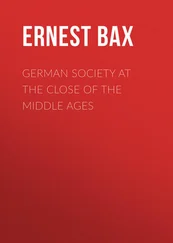The Senate might act as a judicial court, if the Emperor so pleased, and trials for high treason were sometimes entrusted to it. 76For ordinary crimes, Senators were judged by a court consisting of the Prefect of the City and five Senators chosen by lot. 77
There were two Senate-houses at Constantinople, one, built by Constantine, on the east side of the Augusteum, close to the Imperial Palace; 78the other on the north side of the Forum of Constantine. 79It is not clear why two houses were required. 80But in the sixth century we are told that the Senate had ceased to meet in its own place and used to assemble in the Palace. 81This change was probably connected with its co-operation with the Imperial Council.
Important decisions as to legislation and public policy were not usually taken by the Emperor on the single advice of the minister specially concerned. He was assisted by the Consistorium or Imperial Council, which was constantly summoned to deliberate on questions of moment, and we must always remember that, while the Emperor was officially and legally sole author of all laws and responsible for acts of state, the deliberations of the Imperial Council had a large share in the conduct of public affairs. The Consistorium was derived from the legal Consilium of Hadrian, enlarged in its functions and altered in its constitution by Diocletian and Constantine. 82It acted as a high Court, before which important cases, such as treason, might be tried. It was consulted generally on matters of legislation and policy. The Quaestor was its president. It included the two financial Ministers and the Master of Offices; and probably the Praetor Prefect and the Masters of Soldiers who were in residence at the capital generally attended. We have very little information about its size or its constitution; nor do we know how often it met. We have good reason to suppose that it met at stated times, and not merely when convened for a special purpose. 83That the transaction of a considerable amount of ordinary business devolved upon it may be inferred from the fact that it disposed of a large bureau of secretaries and officials known as Tribunes and Notaries. These clerks, who had their office in the Palace, drafted the proceedings and resolutions of the Consistorium, and were sometimes employed to execute missions in pursuance of its decisions. 84
Among the ordinary duties of the Council was that of receiving deputations from the provinces. 85But the most important part of its regular work seems to have been judicial. In serious cases, senators who did not belong to the Council were frequently called to assist. 86The technical term for a meeting of the Council was silentium ; a meeting in which the Senate took part was called silentium et conventus . 87But the words et conventus were frequently dropped; 88and thus it becomes difficult to say in a given case whether a silentium means the Council only or the Council and Senate. 89
It would seem that, while the Senate and Council continued to be formally distinct, the Senate came virtually to be a larger Council and met in the great hall of council, the Consistorium in the Palace. The Emperor, at his discretion, referred political questions either to this larger body or to a smaller body of functionaries which corresponded to the old Imperial Council. The chief occasions on which the Senate could exercise independent political action were when a vacancy to the throne occurred; but some cases are recorded in which it seems to have taken the initiative in recommending political measures.
CHAPTER II: THE ADMINISTRATIVE MACHINERY
WE pass from the constitution of the monarchy to the bureaucratic system of government which it created. This system, constructed with the most careful attention to details, was a solution of the formidable problem of holding together a huge heterogeneous empire, threatened with dissolution and bankruptcy, an empire which was far from being geographically compact and had four long, as well as several smaller, frontiers to defend. To govern a large state by two independent but perfectly similar machines, controlled not from one centre but from two foci, without sacrificing its unity was an interesting and entirely new experiment. These bureaucratic machines worked moderately well, and their success might have been extraordinary if the monarchs who directed them had always been men of superior ability. Blots of course and defects there were, especially in the fields of economy and finance:
sed delicta tamen quibus ignouisse uelimus.
The political creation of the Illyrian Emperors was not unworthy of the genius of Rome.
§ 1. Civil Administration
The old provinces had been split up by Diocletian into small parts, and these new provinces placed under governors whose powers were purely civil. A number of adjacent provinces were grouped together in a circumscription which was called a Diocese (resembling in extent the old province), and the Diocese was under the control of an official whose powers were likewise purely civil. The Dioceses in turn were grouped in four vast circumscriptions, 1under Praetorian Prefects, who were at the head of the whole civil administration and controlled both the diocesan and the provincial governors. This system, it will be observed, differed from the previous system in three principal features: military and civil authority were separated; the provincial units were reduced in size; and two higher officials were interposed between the Emperor and the provincial governor. Perhaps we should add a fourth; for the Praetorian Prefect (whom Constantine had shorn of his military functions) possessed, so far as civil administration was concerned, an immensely wider range of power than any provincial governor had possessed under the system of Augustus.
At the end of the fourth century, then, the whole Empire, for purposes of civil government, was divided into four great sections, distinguished as the Gauls, Italy, Illyricum, and the East ( Oriens ). The Gauls , which included Britain, Gaul, Spain, and the north-western corner of Africa, and Italy , which included Africa, Italy, the provinces between the Alps and the Danube, and the north-western portion of the Illyrian peninsula, were subject to the Emperor who resided in Italy. Illyricum , the smallest of the Prefectures, which comprised the provinces of Dacia, Macedonia, and Greece, and the East , which embraced Thrace in the north and Egypt in the south, as well as all the Asiatic territory, were subject to the Emperor who resided at Constantinople. Thus each of the Praetorian Prefects had authority over a region which is now occupied by several modern States. The Prefecture of the Gauls was composed of four Dioceses: Britain, Gaul, Viennensis (Southern Gaul), and Spain; Italy of three: Africa, the Italies, 2and Illyricum; Illyricum of two: Dacia and Macedonia; the East of five: Thrace, Asiana, Pontus, Oriens, and Egypt. Each of the diocesan governors had the title of Vicarius , 3except in the cases of Oriens where he was designated Comes Orientis , and of Egypt where his title was Praefectus Augustalis . 4It is easy to distinguish the Prefecture of the Oriens from the Diocese of Oriens from the Diocese of Oriens (Syria and Palestine); but more care is required not to confound the Diocese with the Prefecture of Illyricum.
The subordination of these officials to one another was not complete or strictly graded. A comparison of the system to a ladder of four steps, the Emperor at the top, the provincial governor at the foot, with the Prefect and the Vicarius between, would be misleading. For not only were the relations between the provincial governor and the Prefect direct, but the Emperor might communicate directly both with the governor of the diocese and with the governor of the province. Two provinces had a special privilege: the proconsuls of Africa and of Asia 5were outside the jurisdiction either of Vicarius or of Prefect, and were controlled immediately by the Emperor. 6
Читать дальше
